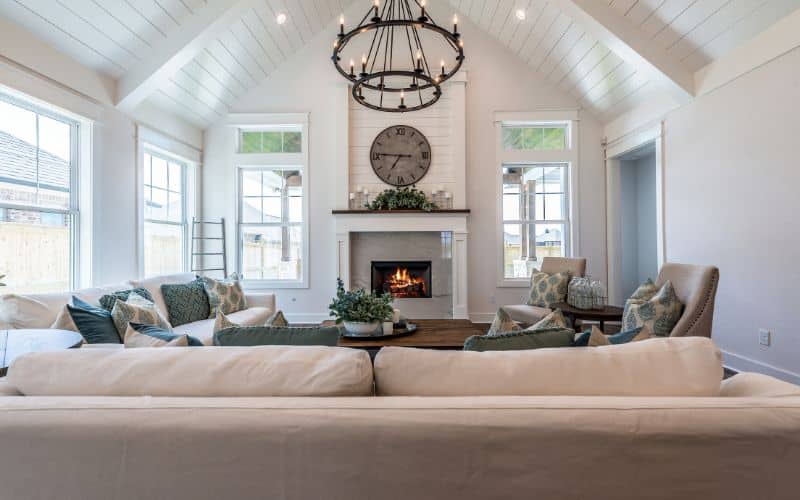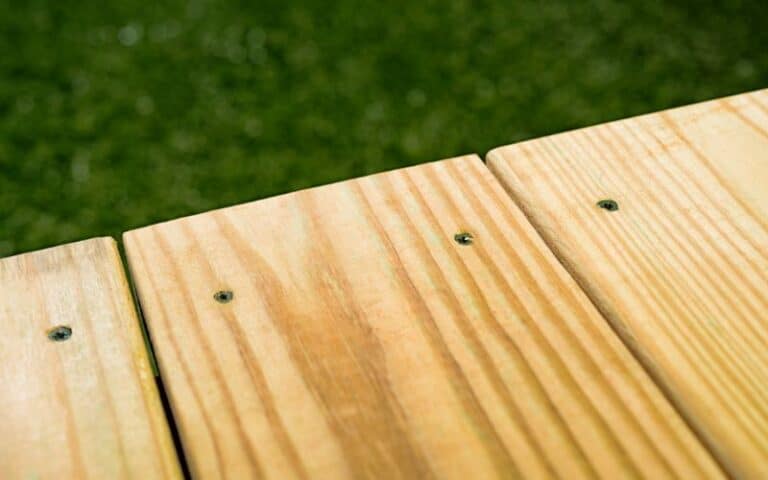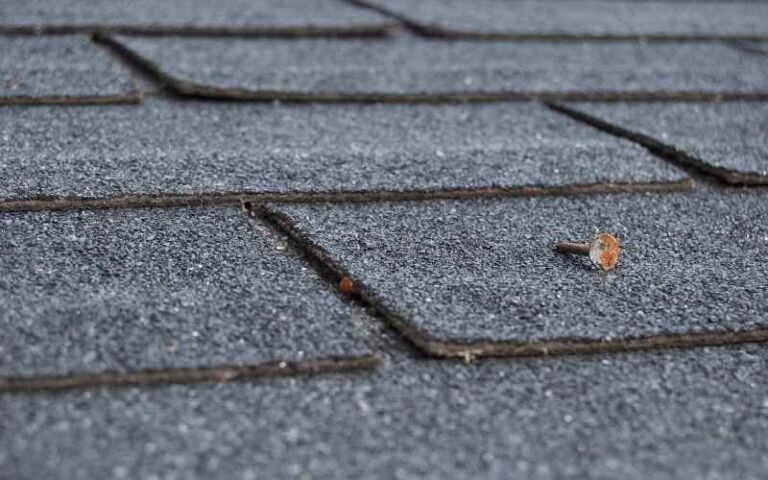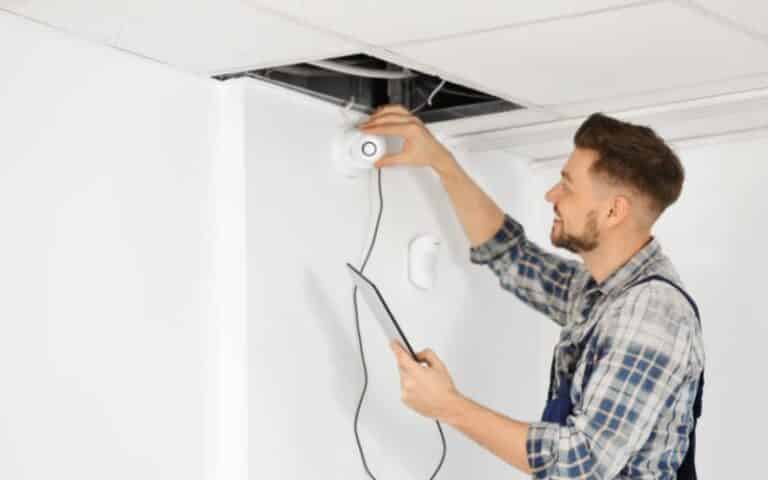Would you like to know how to attach crown molding on a vaulted ceiling without transitions or third pieces? You’ve come to the right place!
Attaching Crown molding onto a ceiling at correct angles ensures cleaner cuts and joint connections, eliminating the need for third pieces.
It also enhances the ceiling’s visual appeal. Doing this involves following a few steps and methods that this article highlights and explains in detail.
Firstly, attach a rig (short ceiling prototype) onto the edge of the vaulted ceiling and test out different spring angles until the rig laps correctly with the slope of the ceiling and the wall’s edge. After this, take the measurements and make adjustments to the crown molding where necessary before attaching the molding boards to the ceiling.
In this article, I’ll guide you through the step-by-step procedure of installing crown molding on vaulted ceilings without transition.
Follow this guide, and you’ll learn to do it like a pro.
Ready for a Roofing Quiz?
Should There Be a Transition When Installing Crown Molding in a Vaulted Ceiling?

Ideally, there shouldn’t be a transition when installing crown molding in a vaulted ceiling.
However, the irregular shaping and slope of a vaulted ceiling may require transitions for the molding to fit in properly.
Transitions offer a safer and sturdier fit to the ceiling. But, it also affects the ceiling’s visual appeal, making the molding look disjointed and patchy.
Crown molding on ceilings adds elegance and grandeur to a room, but when the finishing is not top-notch, it mars the beauty of that grandeur.
This reduction in visual quality and value also affects the home in the following ways:
#1. Reduces The Value Of The Home
Ceilings with transition-free crown molding add to the beauty of a home, hence equally increasing its value.
It can also increase the prospects of the house for future buyers. When buying molding, it is best to install only high-quality ones to ensure they last a long time.
If you buy cheap moldings and attach transitions into them, the tendency that they will depreciate faster will increase considerably.
Moldings made from wood or polyurethane are best and last longer than their cheaper variants.
Even though moldings made from wood or polyurethane are much more expensive, they are worth the money in the long run.
The value and visual appeal they bring to a room are very recognizable.
#2. Ruins The Design And Style Of A Room
Transitions on the crown molding can ruin the interior design of a room.
The third piece and disjointed cuts can be an eyesore rather than complementing the ceiling. Crown moldings are expensive to procure and install.
Having yours done right will avoid grievances leading to dismantling and reinstalling a new molding, adding extra costs to your budget.
Even though transitions offer a sturdier means of connecting the molding, a transition-free molding is possible and fits well enough.
Installing crown molding on vaulted ceilings is difficult and can be overwhelming without adequate skilled knowledge.
However, as much as vaulted ceilings have disadvantages, they also have advantages.
Below is a table that highlights the pros and cons of vaulted ceilings:
| Pros | Cons |
|---|---|
| They give more visual space to a room. | They can increase utility bills. |
| Add aesthetically to the design of a room as a visual centerpiece. | Expensive to construct and maintain. |
| Allow more natural light into the room. | Difficult to maintain. |
| It complements many interior designs. | It doesn’t add space to a room but rather the illusion of more space. |
How to Install Crown Molding in a Vaulted Ceiling Without Transition?
Below are the steps to install crown molding in a vaulted ceiling without transition.
- First, try out different spring angles with a rig (a short ceiling prototype) to find the correct angle that fits the ceiling’s slope.
- To do the above, measure the corner angles of the wall with a Protractor, then subtract the figure from 180.
- Divide the answer by two to get the cut measurements to form a molding joint.
- Cut the molding into separate pieces using the measurements taken.
- Attach the separated moldings to the ceiling.
Testing different spring angles will ensure you can cut the correct length of crown molding for the particular section of the ceiling you are working on.
Before installing the crown molding, you must have obtained the necessary tools beforehand. Below are a few of these tools and their functions:
#1. A Protractor
A Protractor helps measure the space and corner angles of the ceiling before cutting. A lot of protractors are digital.
Therefore they save you the stress of manually calculating and measuring.
A good protractor should be at least 16 inches long. You could also opt for a seven-inch protractor if it works well for you.
The best way to use a protractor is to measure the corner angles of the wall and then divide that value by two.
It will give you the measurement for the two cuts needed to form your mitered joint.
#2. A Miter Saw
A Miter Saw is an absolute prerequisite when installing crown moldings. The Miter Saw cuts through the crown molding before attaching them to the ceiling.
The preferable Miter Saw is the 12-inch Miter Saw. Smaller ones, like the seven ¼ inches, may not cut through the molding well enough.
Ensure you buy a good quality Miter saw that can last a long time.
#3. A Nail Gun
A Nail Gun is one of the essential tools you will need when installing crown molding on ceilings. Most Nail Guns are electric.
However, whichever nail gun you buy, stay clear of the ones that require a compressor.
To use the nail gun, load the gun with 2-inch brad nails, then use it to attach the moldings onto the ceiling.
Wide varieties of Nail Guns are out there. Ensure you inspect any nail gun thoroughly before buying.
#4. A Caulking Gun
A Caulking Gun would not be necessary if the molding fits perfectly on the ceiling. Caulk, however, fills and covers up botched corners to a certain extent.
If a molding installation is poor, correcting the mistakes with caulk will only make them more visible.
Removing and redoing the entire section is best if you notice errors in your molding installation.
What Angle Is Best for Crown Molding on a Vaulted Ceiling Without Transition?
38 degrees is the best angle for crown molding on a vaulted ceiling without transition.
However, it would help to consider the spring angle of the particular section of the ceiling you want to attach the molding.
Usually, the shallower the spring angle of the molding, the better the roll-tilt that runs up the rake wall will look.
The Crown spring angle equals the crown Molding spring angle + The Rake Ceiling Slope.
Properly attaching crown moldings is to back bevel them tightly against the ceiling.
The Crown Slope Reference Plane Angle always comes in handy before you back bevel the top edges of the crown molding.
Does Crown Molding Look Good on a Vaulted Ceiling Without Transition?
Yes, a Crown molding installation looks cleaner and smoother on vaulted ceilings without transitions (third pieces).
The smoother aesthetic works wonder on a room’s interior design.
Transitions tend to appear disjointed, making the ceiling look more like an eye sore than a complement to the ceiling.
Crown moldings with transitions or third pieces are slowly fading out of use.
With many roofers learning, improving, and mastering the skill of installing moldings without transitions, third pieces will soon be a thing of the past.
Related: Partition Wall Under Drop Ceiling
FAQs
#1. What is an Alternative to Crown Molding?
Medium-density fiberboard molding, peel strips, and polyurethane options are good alternatives to crown molding. They are all cheap and easy to install.
#2. Is Crown Molding Outdated?
No, the crown molding will not go out of style for quite a long time. Crown moldings complement a room’s ceiling in a way not many alternatives can.
#3. Which Rooms Should have Crown Moldings
Crown moldings are best in the centralized rooms of a house. Examples are the kitchen, the living room, the dining room, and the family room.
Summary
You can install crown moldings on a ceiling without using transitions. Transitions may not cause any actual harm to the molding.
However, they make the installation look untidy and disjointed.
To get the two cuts needed to form a mitered joint, measure the corner angles of the wall section, subtract it by 180 and divide the answer by two.






